Every Kiwi should take the Grand Traverse of the Southern Alps at least once. It’s truly the flight of a lifetime. A one hour romp aloft over the Mackenzie and the Southern Alps, on a 200km aerial rendezvous with New Zealand’s highest mountains, ice and snow fields.
Short of being a mountain Thar, it’s the easiest way to enjoy an astonishingly intimate encounter with the summit of Aoraki/Mt Cook and the jagged peaks of over one hundred forty mountains that soar above 2000 metres within Mount Cook National Park.
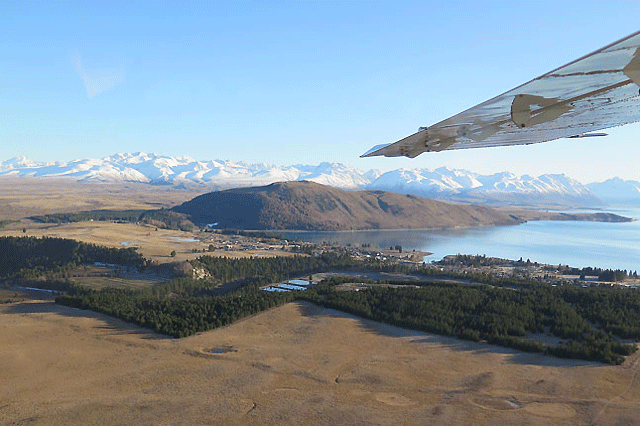
Like a rolling photo-shoot, you’ll stare down the snout of twelve major glaciers, the beautiful, turquoise glacier-fed lakes in the East, and the serpentine ice fields spilling down through the West Coast’s ancient rainforests. For more than 45 years, Air Safaris, a family-owned business headed up by Richard and Tim Rayward, have exhilarated visitors with their pioneering sightseeing flight, the Grand Traverse. The very name is suitably evocative and seductive.
On a crisp blue sky morning, I joined five other passengers, from California, the UK and Japan, for some majestic mountain ogling, from within the toasty confines of a Gippsland GA8 Plane, Richard Rayward joined our pilot, Leon Hunter, in the cock-pit, jovially remarking that we were flying an Australian bird today.
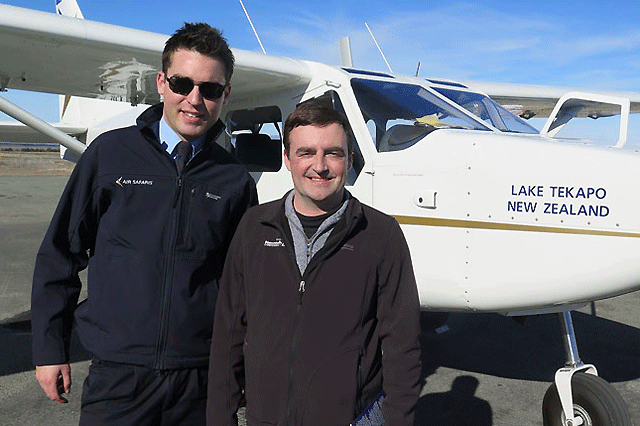
It is pitch-perfect for this celestial pocket of the world, because it is so quiet and unobtrusive. Our wide-eyed sense of anticipation was electric as we duly seated ourselves in the plane. Air Safaris’ especially selected the Gippsland for flightseeing, because every passenger has a window seat and wings-above, delivering optimum panoramic viewing.
Taking-off from their Tekapo base, I admire the sculpted landmark of Mt. John, a mound of greywacke bed-rock, scoured and shaped by advancing ice, when the Tekapo Glacier reached as far as today’s township. (It’s undulating rock-strewn appearance is because it was the terminal moraine.
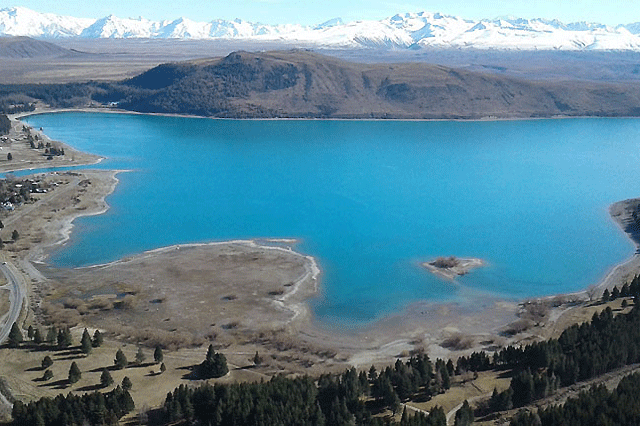
The shimmering turquoise magnificence of Lake Tekapo looks even better from upon high, and the lakeside’s lateral moraine terraces show how high the glacier reached up the sides of the valley, adding further texture to the landscape. Tracking north, the crisp palette of blue and gold Mackenzie colours soon gave way to the jagged alpine terrain of snow and ice.
Before surrendering to the snowdome, Leon pointed out some of the vast high country sheep stations like Godley Peaks and Glenmore, 50,000 acres in size, home to the famous Merino breed of sheep, prized for their super-fine wool. We also spotted the high-end safari-mecca of Lilybank Station, which is only accessible by 4WD and cut off to the outside world when the river runs high. North of Lake Tekapo we traced the braided channels of the Godley River all the way up to the Godley, Classen and Murchison Glaciers.
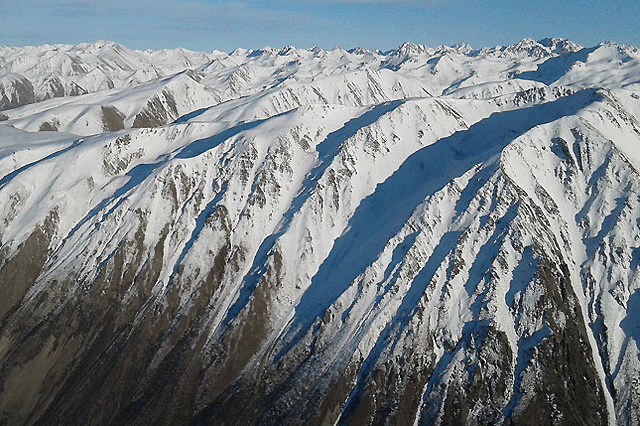
I had never appreciated we had so many glaciers in this elevated sanctuary of the South Island. We then had our first tantalisingly intimate encounter with the face of a monster mountain, the 3170m-high Malte Brun.This imposing range separates Murchison Glacier from the nation’s longest ice flow, the mighty Tasman Glacier which slithers down into Tasman Valley for 29km. The ice base is over 600 metres thick, replenished with 50 metres of annual snow fall.
Heading west and crossing the Southern Alps, the relatively calm flight suddenly took on the sensation of being in a tumble dryer, as the plane was buffeted and bounced by a southwester’ updraft, as we threaded our way through the fortress-like mountains. It was nervously exhilarating.
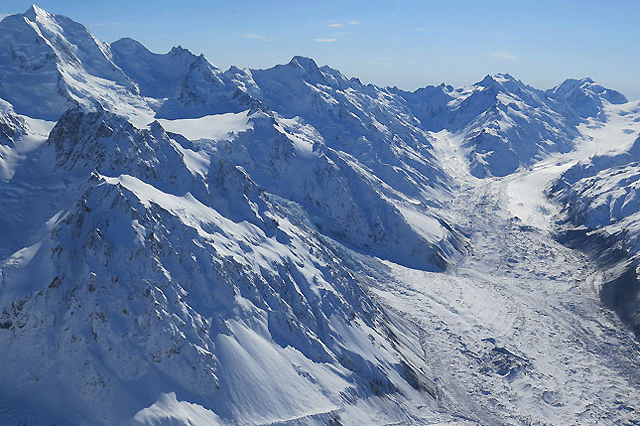
What struck me the most is the sheer expanse of the Southern Alps, a snow-capped wonderland that stretches wide and long in search of the horizon, like the alpine world’s equivalent of an infinity pool. This is grandeur on a gob-smacking scale. Suddenly, the vast rainforest of Westland National Park loomed large, a great bosom of verdant green rising up the slopes, juxtaposed by the snowfield at the head of Franz Josef Glacier.
From above, we marvelled at how this “river of ice” plummets steeply, almost touching the shoreline of the Tasman Sea. After a quick stop in Franz Josef, where the mercury was starkly higher than on the eastern side of the Alps, we lifted off again, gasping in awe at Fox Glacier and Lake Matheson before veering east for a close inspection with more vaulted peaks, notably the bridesmaid to Aoraki, glorious Mt. Tasman.
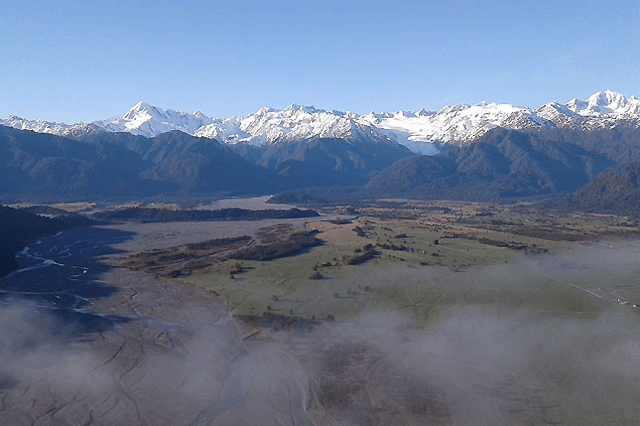
But nothing compares to the ultimate frisson, a close encounter with New Zealand’s mountain monarch, Aoraki/Mt. Cook. Leon flew a perfect circle adjacent to its summit, to ensure all of us could savour the majesty of its cloud-piercing supremacy. Standing supreme with its snow and icefields tumbling down to the glaciers below, I gazed in awe at the summit, seemingly so close I could nearly reach out and touch it.
It’s the closest I’ll ever get to scaling its soaring heights, I quietly thought to myself. Directly below, crouched at its base, I could make out Mount Cook village and the legendary Hermitage. The final romp back to home base gave us an encore viewing of the sublime Tasman Glacier and its braided receptacle, the Tasman River, which glacially- feeds the luminous turquoise brilliance of Lake Pukaki.
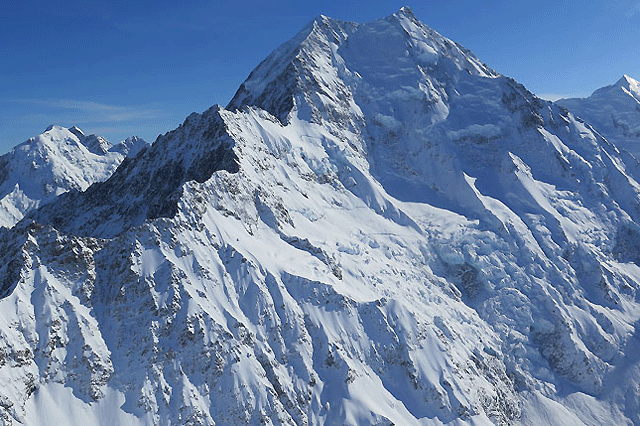
I spotted some big bulky icebergs floating in the terminal lake. Finally, the burnt-pancake sprawl of the Mackenzie Basin monopolises the sweeping panorama, where clearly visible glacial deposits pepper-pot the golden tussocks and desert-like grasslands.
Everyone alighted from the plane in a sweet state of ecstasy, eye-poppingly overdosed by the extravagant visual symphony that is the Grand Traverse. After wallowing in such a head-swirl of achingly gorgeous untamed scenery, the adrenaline rush lingered long into the day.
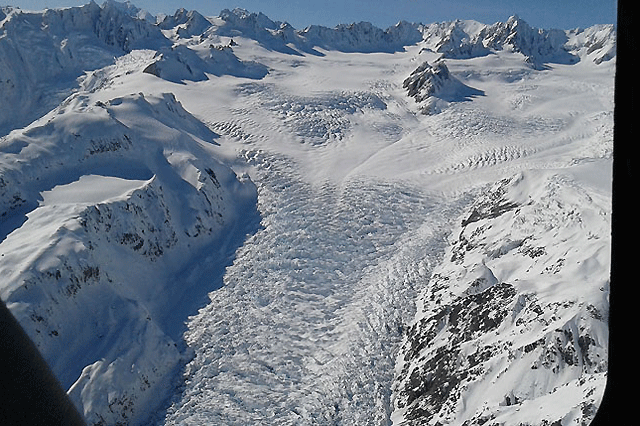
The biggest dilemma you’ll face is whether to try and photograph and video the rolling kaleidoscope of alpine wonders – or put the camera down and just drink it all in. Whatever impulse wins the day, this flight of a lifetime that will remained etched in your memory. It is alpine theatre in excelesis. www.airsafaris.co.nz
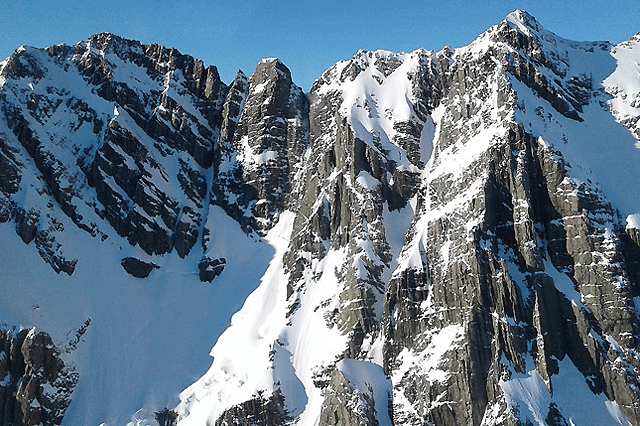
The Mackenzie region’s vivid lakes, blue glaciers and jagged mountains are ripe for exploration in so many ways, including the Alps2Ocean cycle trail. A great starting point when planning a journey to this majestic region of New Zealand is the official website. www.MackenzieNZ.com
By Mike Yardley.

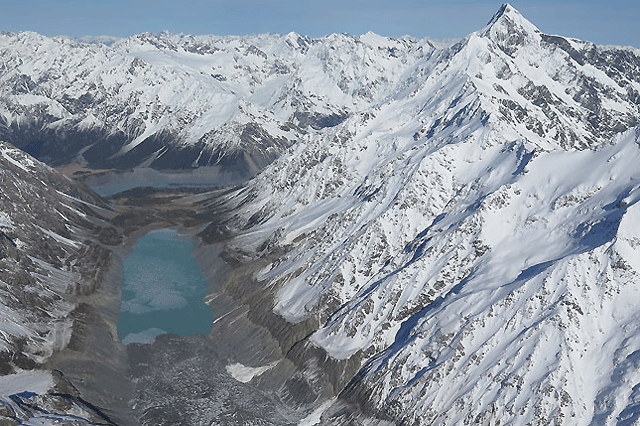
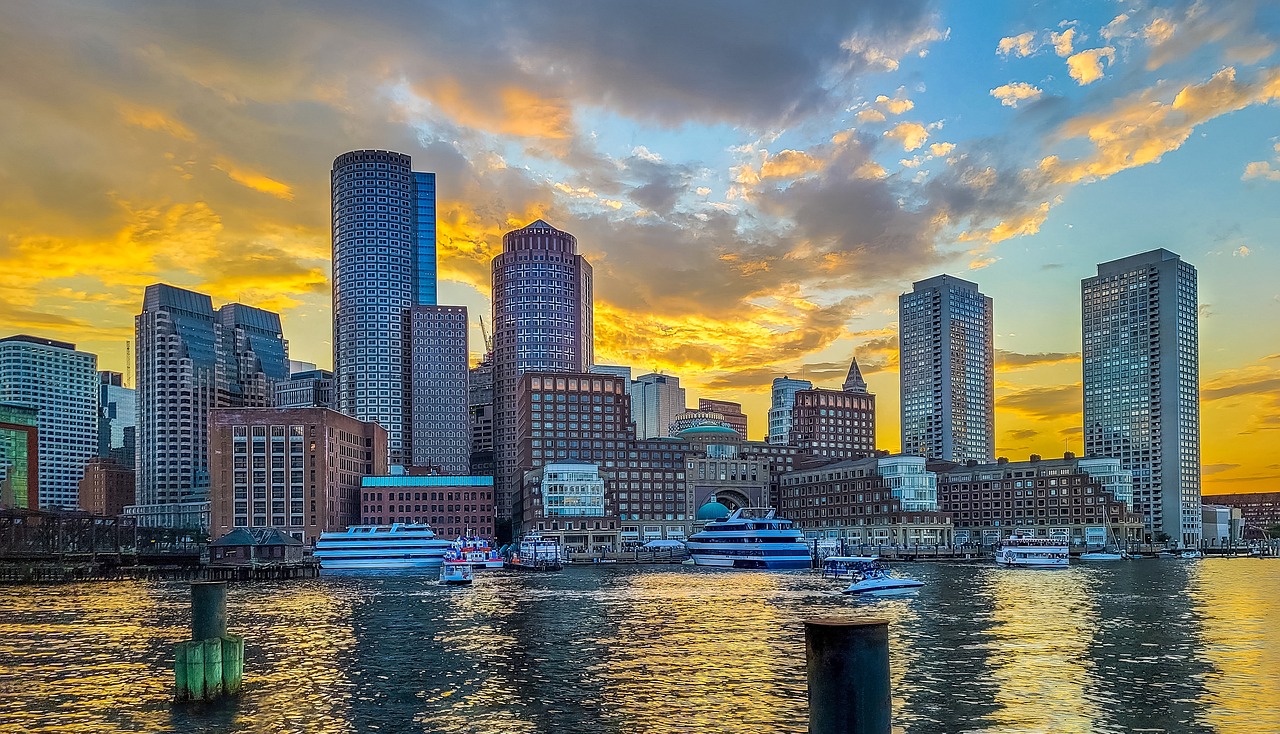

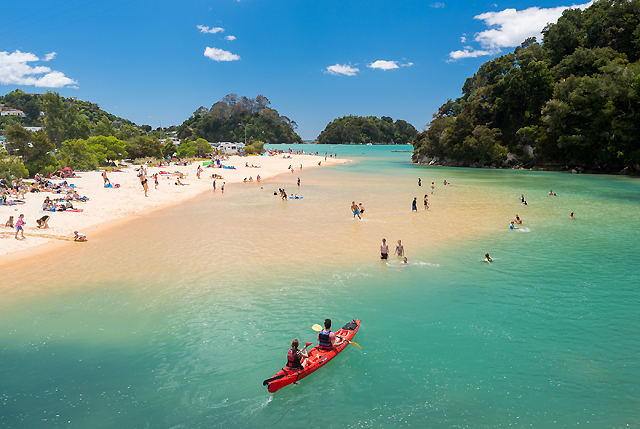
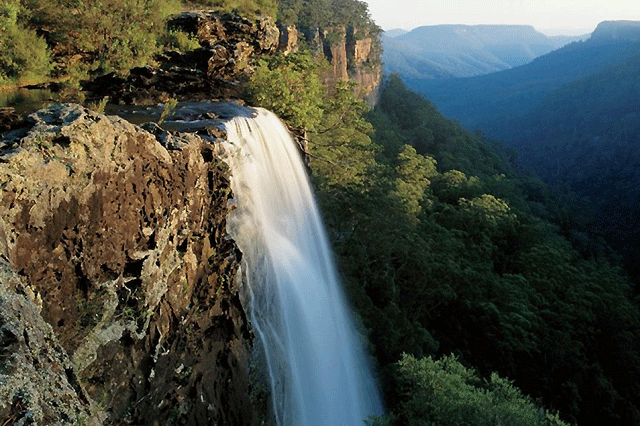
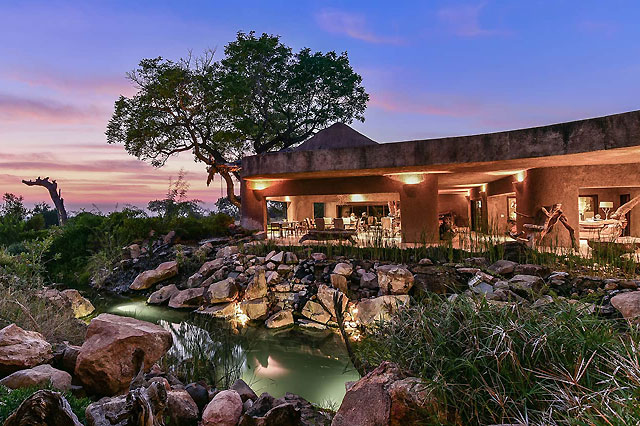
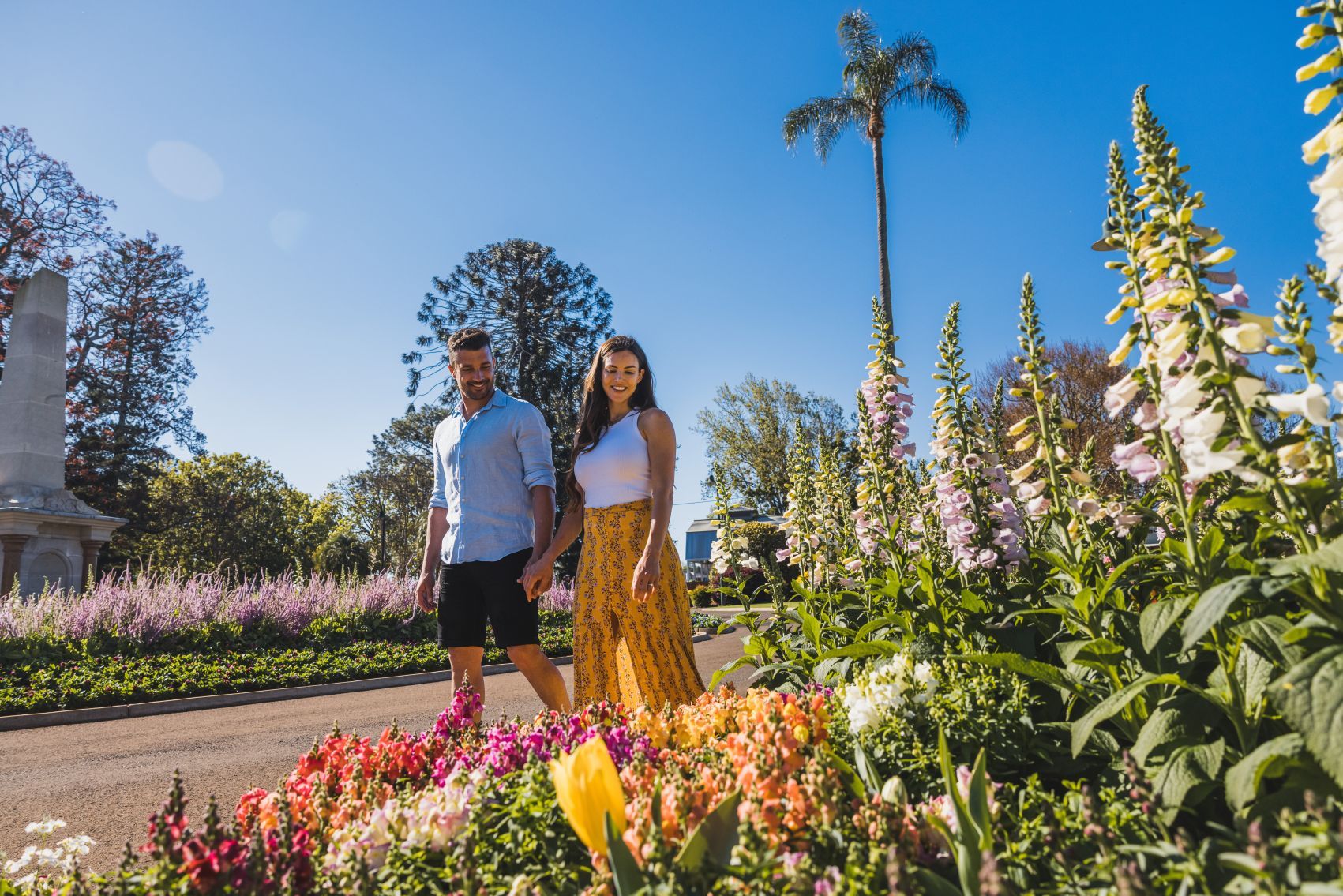

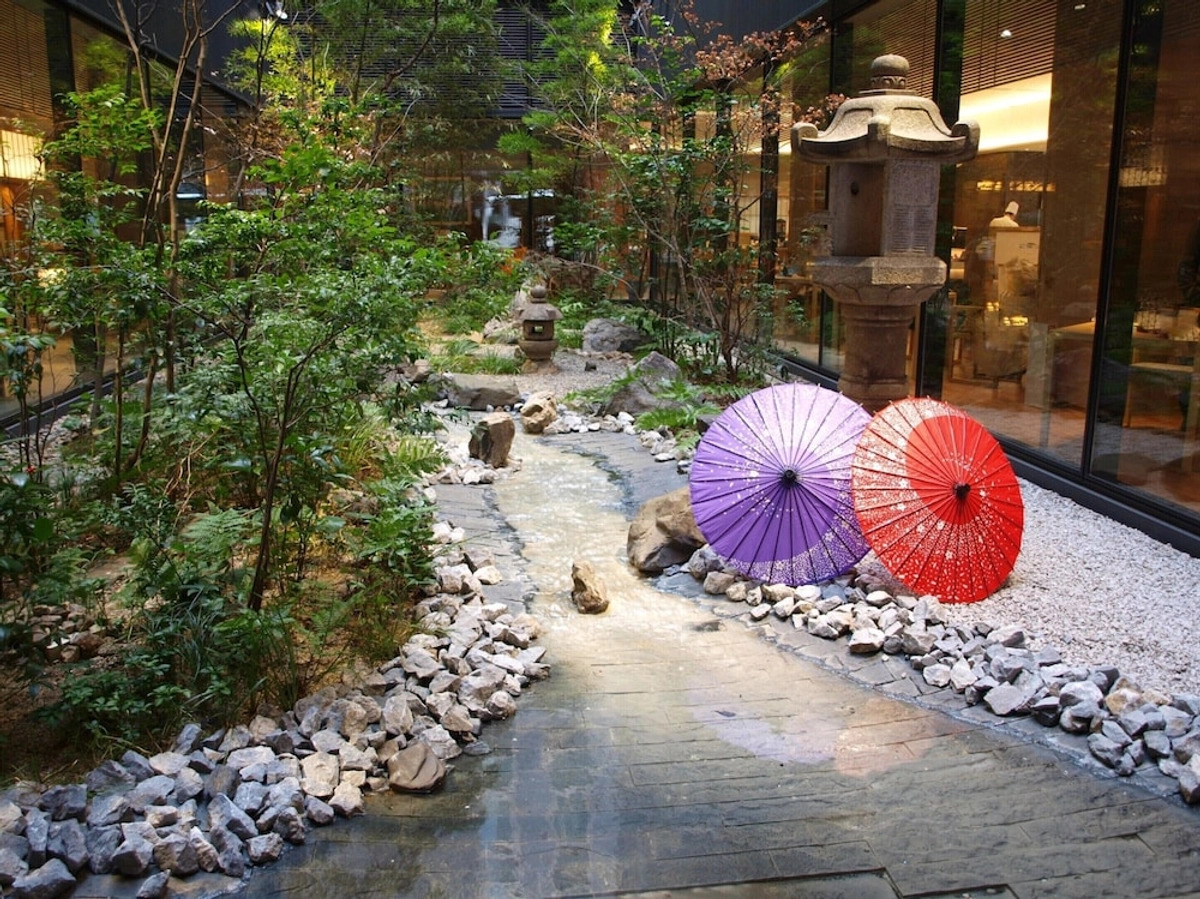



Recent Comments